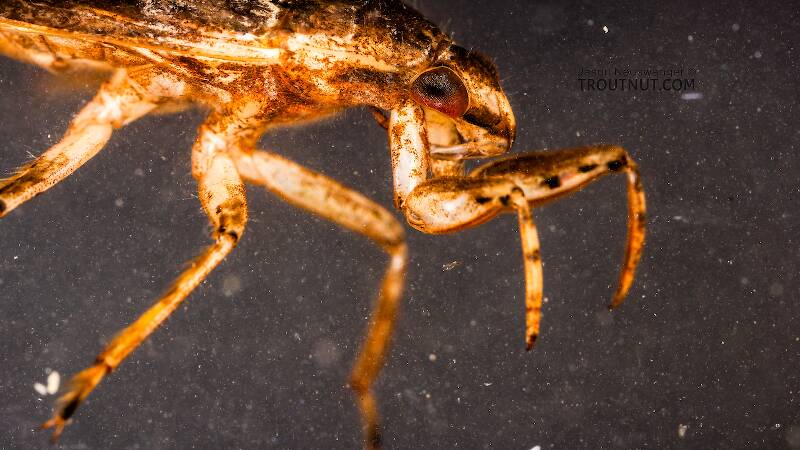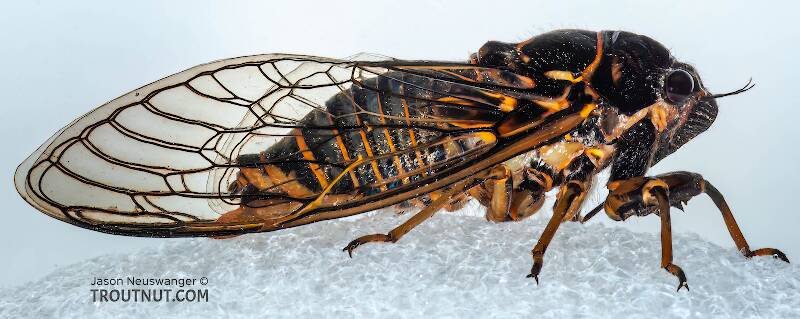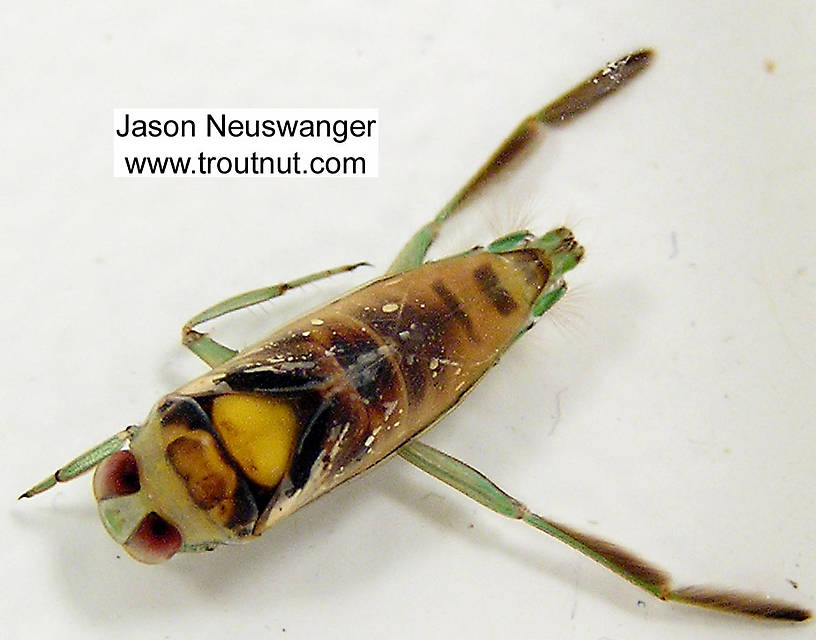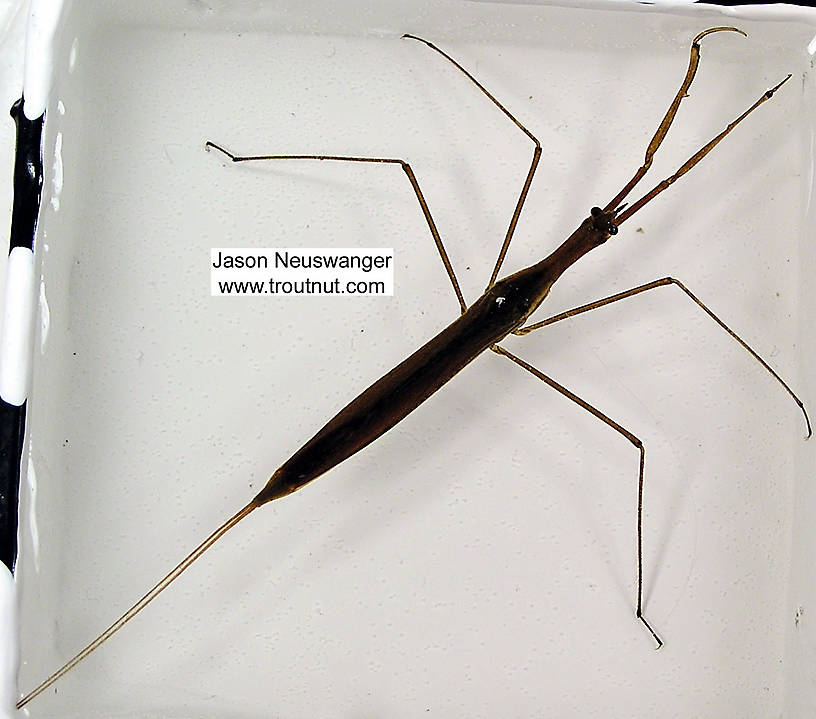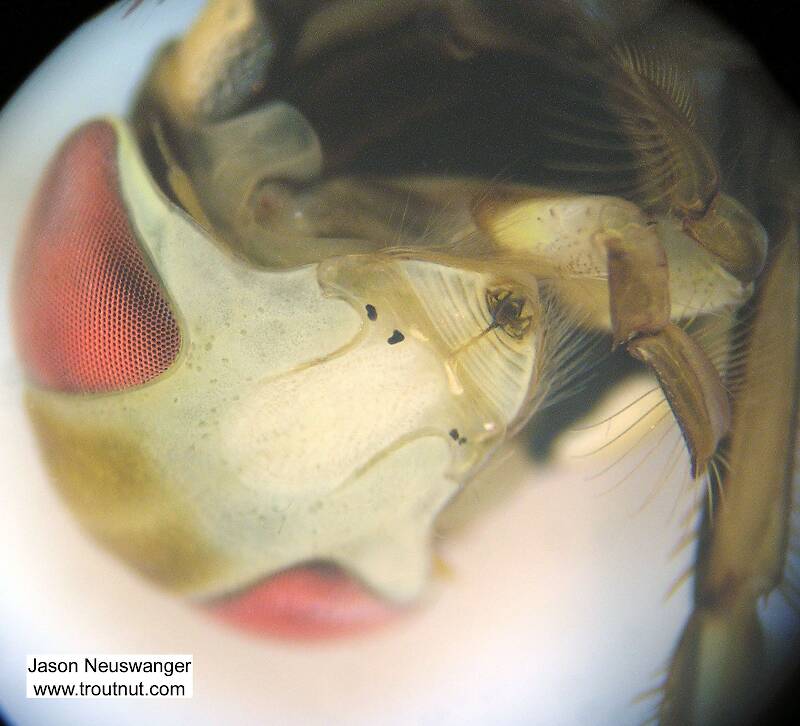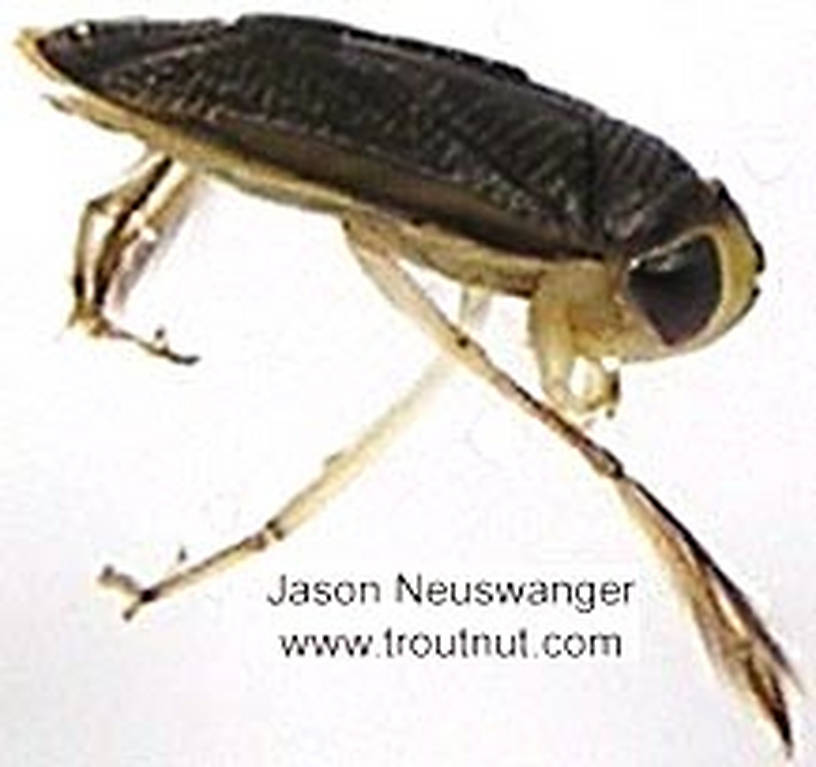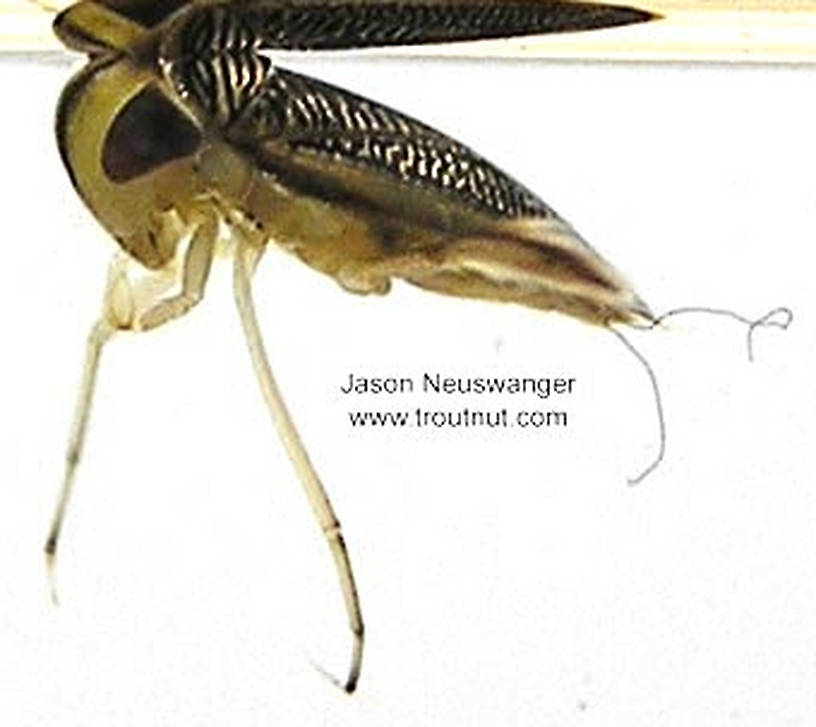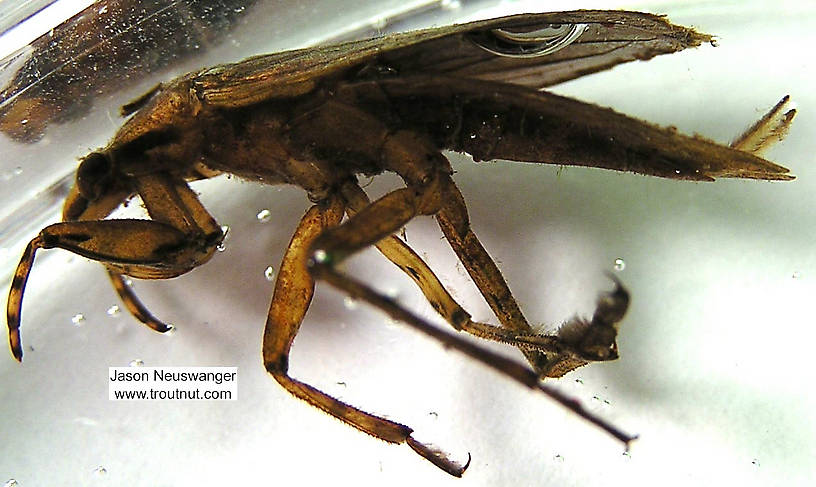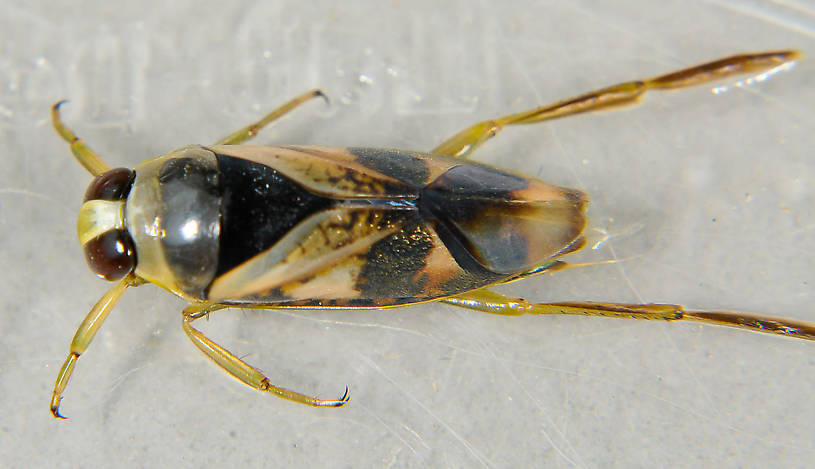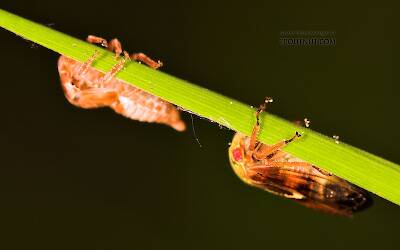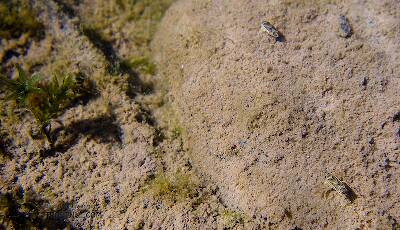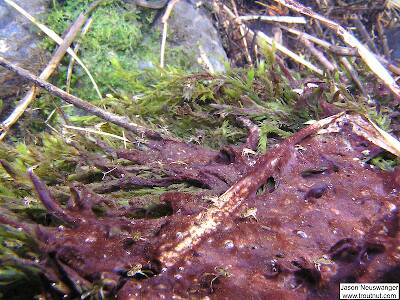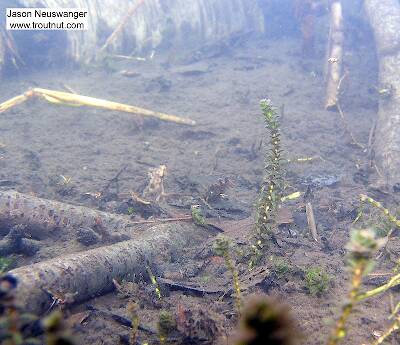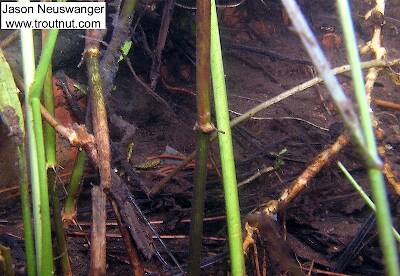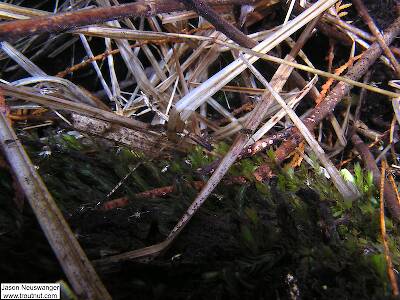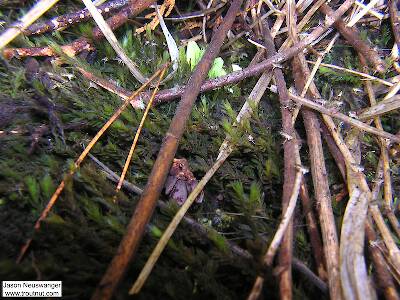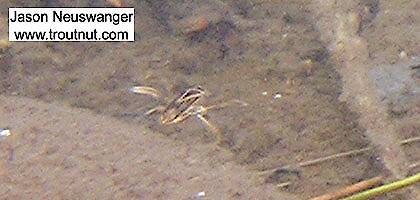
Salmonflies
Pteronarcys californica
The giant Salmonflies of the Western mountains are legendary for their proclivity to elicit consistent dry-fly action and ferocious strikes.
Featured on the forum

This specimen keys pretty easily to Onocosmoecus, and it closely resembles a specimen from Alaska which caddis expert Dave Ruiter recognized as this genus. As with that specimen, the only species in the genus documented in this area is Onocosmoecus unicolor, but Dave suggested for that specimen that there might be multiple not-yet-distinguished species under the unicolor umbrella and it would be best to stick with the genus-level ID. I'm doing the same for this one.

Troutnut is a project started in 2003 by salmonid ecologist Jason "Troutnut" Neuswanger to help anglers and
fly tyers unabashedly embrace the entomological side of the sport. Learn more about Troutnut or
support the project for an enhanced experience here.
Insect Order Hemiptera (True Bugs)
The large, diverse family of "true bugs" contains several insects of importance to anglers, both aquatic and terrestrial.
Perhaps the best known are the water boatmen of Corixidae, which are a primary trout food source at times in many high lakes, spring ponds, and slow-moving rivers. They are generally aquatic, although they may come out of the water to mate. I have seen good numbers of them flying over a northwoods river in late March, a sight that had me baffled until I captured one of the odd insects that kept flying past me and plunging into the water.
Other aquatic true bugs have received very little attention in
fly fishing literature, but they probably deserve more, because they are among the largest insects native to the trout's environment. The giant water bugs of Belostoma are especially favored, but trout also feed on the water scorpions of Nepidae. I plan soon to spend more time researching and imitating these insects to confirm my hunches and early observations.
The most famous terrestrial members of Hemiptera are the cicadas, which make for good fishing on those rare years when a large brood appears. Late every summer some fly fishers turn to tiny related terrestrials they call Jassids, which are the leaf hoppers and tree hoppers of the families Membracidae and Cicadellidae.
Perhaps the best known are the water boatmen of Corixidae, which are a primary trout food source at times in many high lakes, spring ponds, and slow-moving rivers. They are generally aquatic, although they may come out of the water to mate. I have seen good numbers of them flying over a northwoods river in late March, a sight that had me baffled until I captured one of the odd insects that kept flying past me and plunging into the water.
Other aquatic true bugs have received very little attention in
fly fishing literature, but they probably deserve more, because they are among the largest insects native to the trout's environment. The giant water bugs of Belostoma are especially favored, but trout also feed on the water scorpions of Nepidae. I plan soon to spend more time researching and imitating these insects to confirm my hunches and early observations.
The most famous terrestrial members of Hemiptera are the cicadas, which make for good fishing on those rare years when a large brood appears. Late every summer some fly fishers turn to tiny related terrestrials they call Jassids, which are the leaf hoppers and tree hoppers of the families Membracidae and Cicadellidae.
Specimens of True Bugs:
9 Adults
1 Streamside Picture of True Bugs:
7 Underwater Pictures of True Bugs:
Discussions of Hemiptera
DO You Remember???
6 replies
Last reply on Feb 7, 2007 by Konchu
My brother and I have a disagreement about bugs from our childhood.
I remember a swarm of cicadas (17-year locusts), and I'm trying to place the year. It would be 1954 to 1959, I believe. I remember the cicadas' distinctive call ringing through the summer (spring?) night. They covered anything that shed light—lampposts, storefront windows, porch lights. They were about in huge numbers. When you walked down the street, you couldn't avoid stepping on them, and they crunched. (Big bugs.)
My brother says he only recalls a mayfly swarm—post 1959—that was so bad it caused auto accidents on the freeway because cars ran over the mayfly bodies and collectively they were greasy and caused cars to skid.
So does anyone out there remember either of these events. I think both probably occurred. We'd like to pin down the years.
Janney
I remember a swarm of cicadas (17-year locusts), and I'm trying to place the year. It would be 1954 to 1959, I believe. I remember the cicadas' distinctive call ringing through the summer (spring?) night. They covered anything that shed light—lampposts, storefront windows, porch lights. They were about in huge numbers. When you walked down the street, you couldn't avoid stepping on them, and they crunched. (Big bugs.)
My brother says he only recalls a mayfly swarm—post 1959—that was so bad it caused auto accidents on the freeway because cars ran over the mayfly bodies and collectively they were greasy and caused cars to skid.
So does anyone out there remember either of these events. I think both probably occurred. We'd like to pin down the years.
Janney
Anyone else find these to be important?
2 replies
Posted by Troutnut on Jul 26, 2006 in the species Belostoma flumineum
Last reply on Oct 9, 2006 by GONZO
Back when I was just starting to learn to fly fish and still kept quite a few fish, I autopsied the stomachs of a couple 17-19 inch brown trout in August and found them packed with these Belostoma flumineum bugs.
I haven't tied a reasonable imitation yet, but if those fish (from a few miles apart on the same river) were so fond of them an imitation is probably a great idea. It would be good to figure out where and when these things are important.
None of the fly fishing literatue I've seen has dealt with them at all, except for mentioning their existence in passing.
I haven't tied a reasonable imitation yet, but if those fish (from a few miles apart on the same river) were so fond of them an imitation is probably a great idea. It would be good to figure out where and when these things are important.
None of the fly fishing literatue I've seen has dealt with them at all, except for mentioning their existence in passing.
Start a Discussion of Hemiptera
Insect Order Hemiptera (True Bugs)
Taxonomy
Family in Hemiptera
BelostomatidaeGiant Water Bugs
2
18
CicadellidaeLeafhoppers
0
1
CicadidaeCicadas
1
4
CorixidaeWater Boatmen
3
15
MembracidaeTreehoppers
0
0
NepidaeWater Scorpions
1
7
NotonectidaeBackswimmers
2
5
Family in Hemiptera: Belostomatidae, Cicadellidae, Cicadidae, Corixidae, Membracidae, Nepidae, Notonectidae
11 families (Gelastocoridae, Gerridae, Hebridae, Hydrometridae, Macroveliidae, Mesoveliidae, Naucoridae, Ochteridae, Pleidae, Saldidae, and Veliidae) aren't included.


